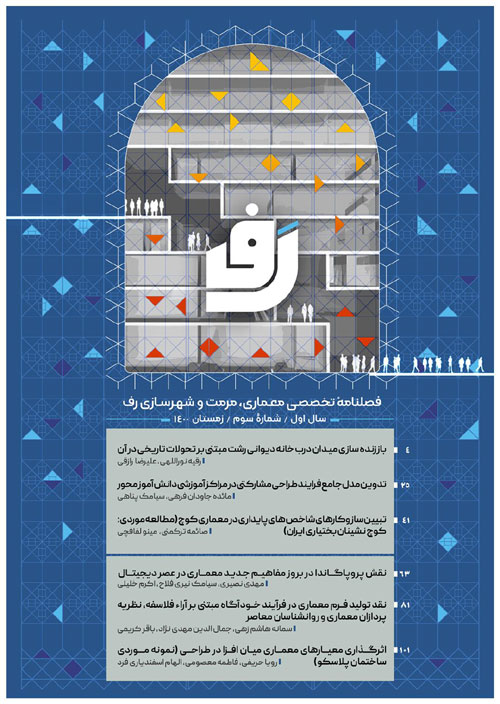The role of propaganda on evincing new concepts in architecture at digital era
Author(s):
Article Type:
Research/Original Article (بدون رتبه معتبر)
Abstract:
There has been an increasing focus on culture in studies related to sociology scope in architecture in past years. The changes in people’s living styles and expectations by preplanned methods and allegorical manipulation in advertisements caused a tendency on masses of society and people’s willingness for using the products in urban planning and architecture scope that is on the way of the propagandist’s policy and goals. Since the "critical theory paradigm" is in search of discovering the essence of the social fact that is hidden in the infrastructure of society and declaring these facts as a result of cultural, political, economic, and moral factors during the time; the paradigm of this research is critical theory and focus on the layers of society. This research has investigated about three hypothesizes by a triangulation strategy which contains qualitative case study analysis, theoretical comparison, and logical reasoning by formalizing propositions and (with a hierarchical perspective) is in search of discovering the influencing mechanism of internet platforms and cyberspaces in contemporary man kind's essence and his needs in new-era societies and also along that, the way of influencing these factors on architecture typologies (and the measure of using digital-era human) in public urban spaces. It is necessary to have a logical mechanism for scrutinizing the discussed hypothesis. In other research that was about the role of propaganda in persuading people to use some specific architecture typology; There is no study that is in search of discovering a relationship between the hierarchical role of macro and micro policies of the government and evincing new concepts in architecture and there is a gap in this field of studies. In a temporary era, humans have an intense penchant for new communication technologies. According to this, contemporary man kind's essence has been transformed. Published content on cyberspace platforms such as Instagram, Facebook, Twitter, Flicker and etc. can be under the effect of government policies and affect culture and people's expectations. The qualitative case study analysis shows that cyberspace is an appropriate context for persuading people to new types of architecture according to theoretical comparison it can be said that the government policy propagates new concepts in architecture by impressing the culture of society. Architecture affords many concepts in addition to the providing required context for a system of setting and celebrity architects schematize new concepts in that society through a new type of architecture. Finally, based on the Truth value of the hypothesis it can result that propaganda and the imposed policy of society have a role in controlling new types of architecture and the designed works of celebrity architects and also in evincing new concepts in architecture.
Keywords:
Language:
Persian
Published:
Raf Quarterly Scientific Journal of Architecture, Restoration and Urbanism, Volume:1 Issue: 3, 2022
Pages:
63 to 80
magiran.com/p2503293
دانلود و مطالعه متن این مقاله با یکی از روشهای زیر امکان پذیر است:
اشتراک شخصی
با عضویت و پرداخت آنلاین حق اشتراک یکساله به مبلغ 1,390,000ريال میتوانید 70 عنوان مطلب دانلود کنید!
اشتراک سازمانی
به کتابخانه دانشگاه یا محل کار خود پیشنهاد کنید تا اشتراک سازمانی این پایگاه را برای دسترسی نامحدود همه کاربران به متن مطالب تهیه نمایند!
توجه!
- حق عضویت دریافتی صرف حمایت از نشریات عضو و نگهداری، تکمیل و توسعه مگیران میشود.
- پرداخت حق اشتراک و دانلود مقالات اجازه بازنشر آن در سایر رسانههای چاپی و دیجیتال را به کاربر نمیدهد.
In order to view content subscription is required
Personal subscription
Subscribe magiran.com for 70 € euros via PayPal and download 70 articles during a year.
Organization subscription
Please contact us to subscribe your university or library for unlimited access!


